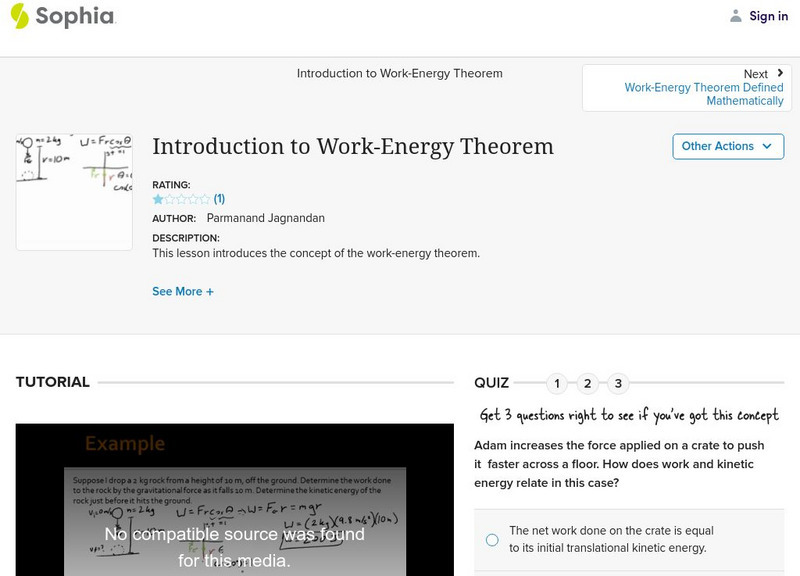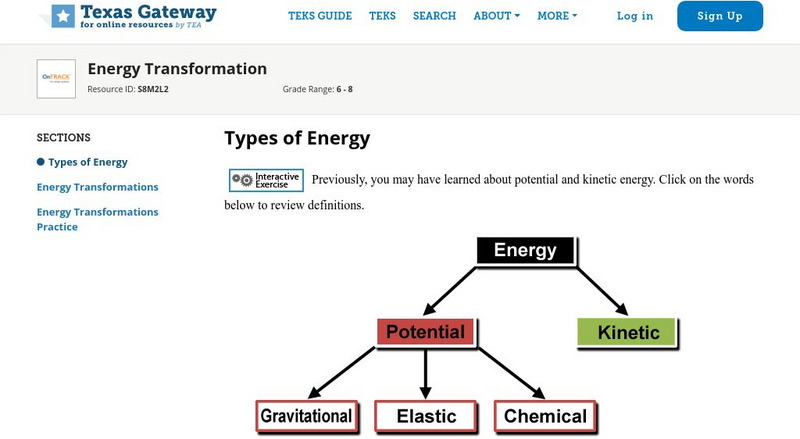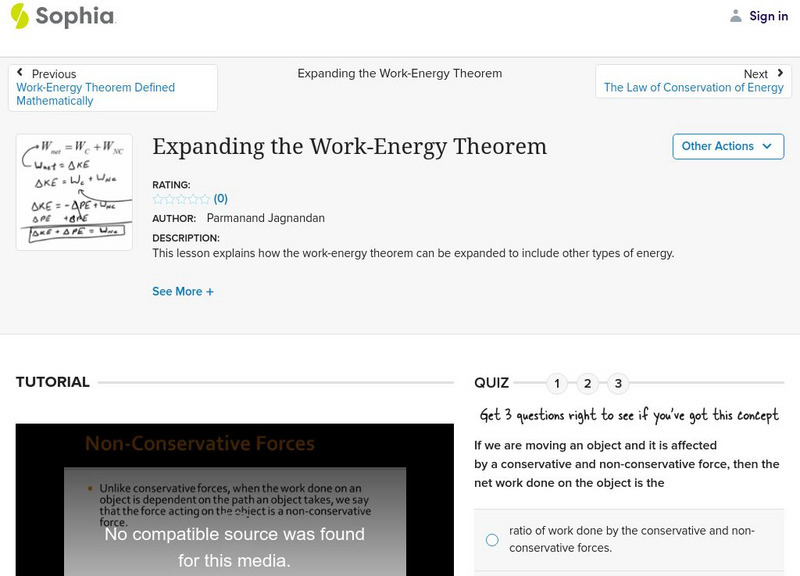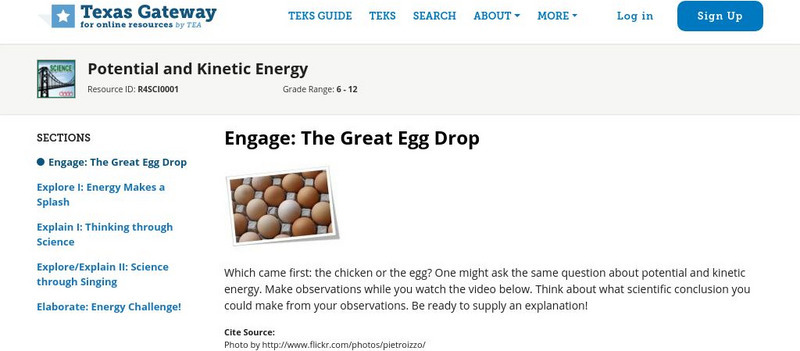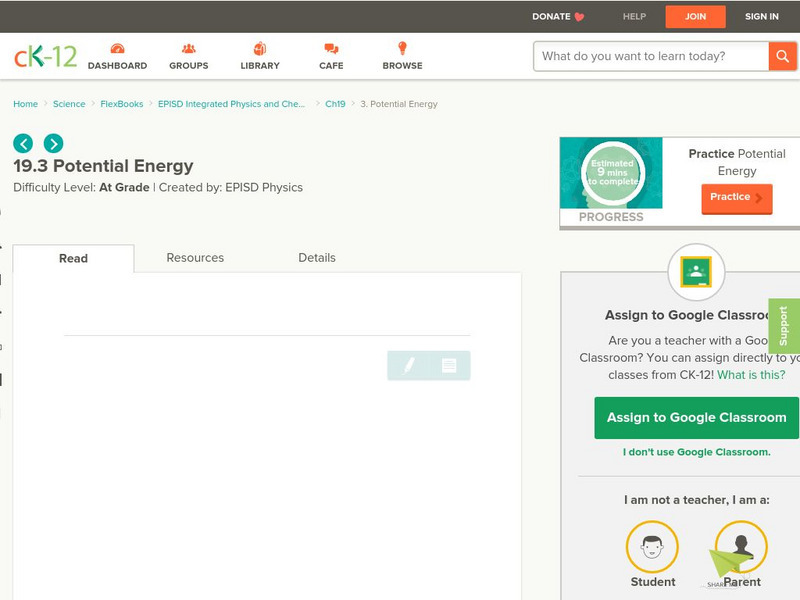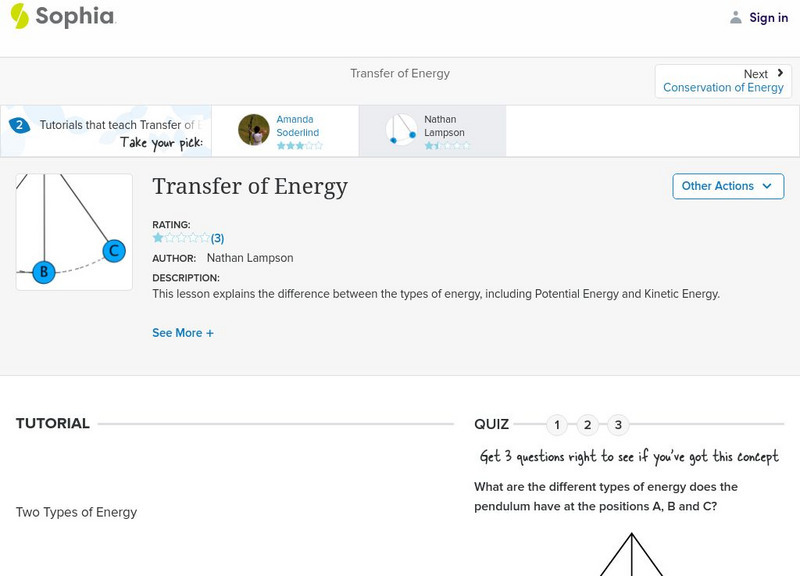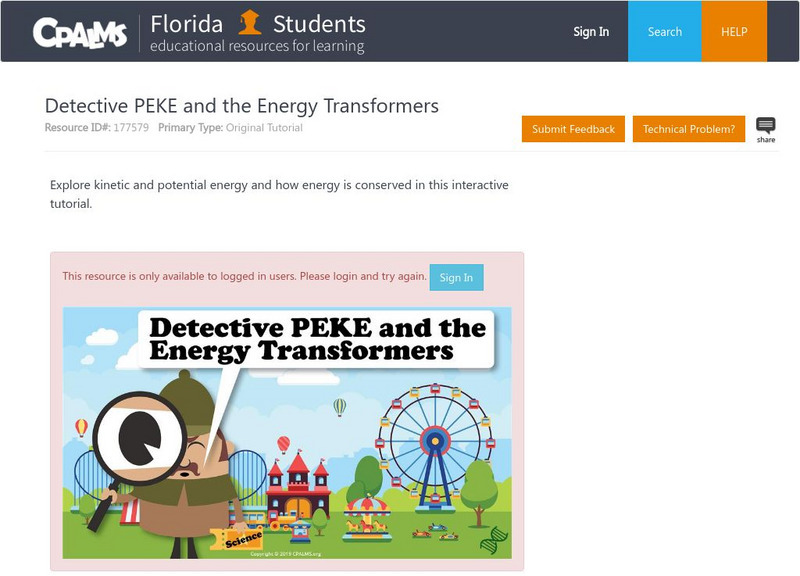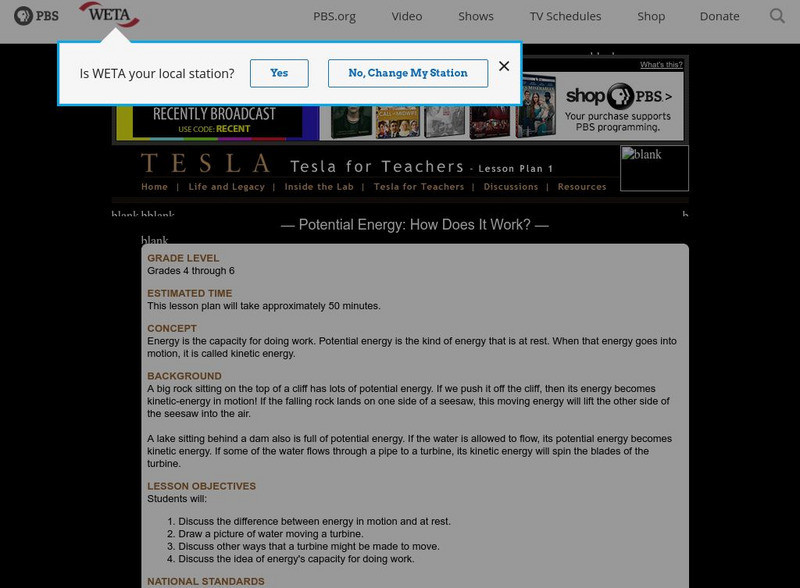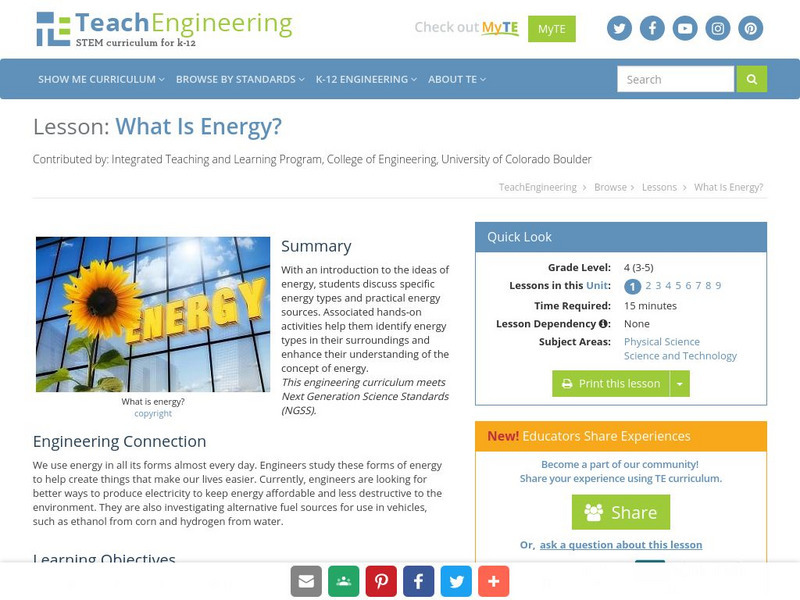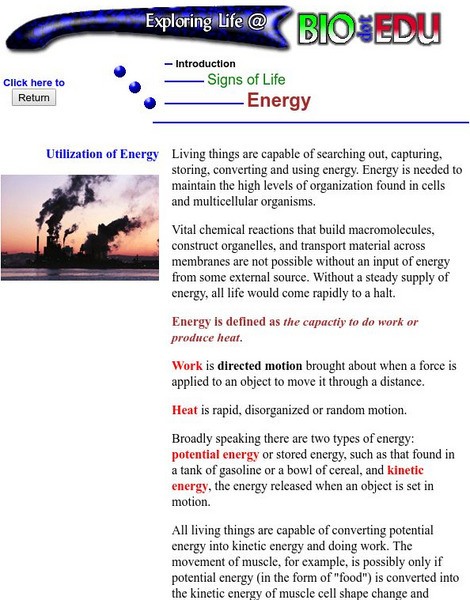Hi, what do you want to do?
Sophia Learning
Sophia: Energy: Lesson 5
This lesson discusses the role energy plays within living things. It is 5 of 7 in the series titled "Energy."
Sophia Learning
Sophia: Energy: Lesson 7
This lesson discusses the role energy plays within living things. It is 7 of 7 in the series titled "Energy."
Sophia Learning
Sophia: Introduction to Work Energy Theorem
Watch this screencast to understand the work-energy theorem in regards to energy. [8:45]
Texas Education Agency
Texas Gateway: Types of Energy
This interactive tutorial provides a brief review of the 2 types of energy and an explanation of the law of of conservation of energy.
Sophia Learning
Sophia: Expanding the Work Energy Theorem
A narrated tutorial which illustrates how the work-energy theorem can be expanded to include other kinds of energy. [10:07]
Better Lesson
Better Lesson: Drop and Pop Energy and Speed Exploration
Fourth graders use a toy to make observations that speed is related to the amount of energy in an object as well as work with gravitational and elastic potential energy.
Utah State Office of Education
Utah State Office of Education: Force, Energy, & Motion
A unit on energy, force, and motion presented with interactive and classroom activities. Students gain an understanding of weight, mass, potential and kinetic energy, sound, and heat with this engaging resource.
Texas Education Agency
Texas Gateway: The Great Egg Drop!
Which came first: the chicken or the egg? One might ask the same question about potential and kinetic energy. Make observations while you watch the video below. Think about what scientific conclusion you could make from your...
Concord Consortium
The Molecular Workbench Database: Energy Conservation in Chemical Reactions
Follow the energy conversion from potential to kinetic in this interactive activity that explores total energy in chemical reactions.
CK-12 Foundation
Ck 12: Potential Energy
[Free Registration/Login may be required to access all resource tools.] Students explore the differences between kinetic and potential energy, and understand how they are dependent on each other.
TeachEngineering
Teach Engineering: Energy
Through nine lessons, students are introduced to a range of energy types--electrical, light, sound and thermal-as well as the renewable energy sources of wind, hydro (water) and solar power. Subjects range from understanding that the...
Sophia Learning
Sophia: Transfer of Energy: Lesson 2
This lesson explains the difference between the types of energy, including Potential Energy and Kinetic Energy. It is 2 of 2 in the series titled "Transfer of Energy."
Physics Classroom
The Physics Classroom: Energy Relationships for Satellites
The orbits of satellites are described and an energy analysis is performed. Kinetic, potential and total mechanical energy are explained and applied to the motion of satellites.
E-learning for Kids
E Learning for Kids: Science: Pirates: What Is Energy Conversion?
This lesson covers the different types of energy, the definitions of kinetic and potential energy, how energy can be converted into different forms, and the law of conservation of energy.
Concord Consortium
Concord Consortium Where Does the Energy of a Spark Come From?
Students define potential energy and explore the relationship between potential energy and field. How does potential energy change when things are pushed or pulled? Where does the energy that was used to charge the Van de Graaff...
CK-12 Foundation
Ck 12: Plix Series: Potential Energy Diagrams
[Free Registration/Login Required] Observe what happens in the change in the type of energy during a reaction in this simulation. After the activity, answer a self-correcting challenge question.
CPALMS
Florida State University Cpalms: Florida Students: Detective Peke and the Energy Transformers
Explore kinetic and potential energy and how energy is conserved in this interactive tutorial.
PBS
Pbs Teachers: Potential Energy: How Does It Work?
Describe the difference between energy in motion and at rest, and demonstrate energy's capacity for doing work. Draw a picture of water moving a turbine, and discuss other ways that a turbine might be made to move.
TeachEngineering
Teach Engineering: What Is Energy?
With an introduction to the ideas of energy, students discuss specific types of energy and the practical sources of energy. Hands-on activities help them identify types of energy in their surroundings and enhance their understanding of...
Energy for Sustainable Development
Esd Bulgaria: Kids & Energy: Seven Energy Principles
Outlines the seven main principles of energy.
City University of New York
Energy: Characteristics of Life
An explanation of types of energy, how living things use energy and how they can convert energy forms. This is a good, basic, start to studying this characteristic of life.
Science Education Resource Center at Carleton College
Serc: Com Padre: Introduction to Work and Energy: The Hopper Popper Surprise
This activity will provide learners with a qualitative understanding of the Work-Energy Theorem, especially on how the energy transferred depends on the distance over which the force is applied.
Ducksters
Ducksters: Physics for Kids: Potential Energy
Kids learn about potential energy in the science of physics. The energy of position and state can be calculated using mass, gravity, and height. The standard unit is the joule. How it is different from kinetic energy.
NASA
Nasa: From Stargazers to Starships: Energy
Demonstrates how principles of kinetic energy, potential energy and energy conservation can be used to determine the speed of a descending object if given its initial height. Further discussion of other topics such as heat and...
Other popular searches
- Kinetic and Potential Energy
- Kinetic Potential Energy
- Kinetic vs. Potential Energy
- Kinetic vs Potential Energy
- Potential Kinetic Energy Leo
- Kinetic/potential Energy
- Kinetic & Potential Energy







